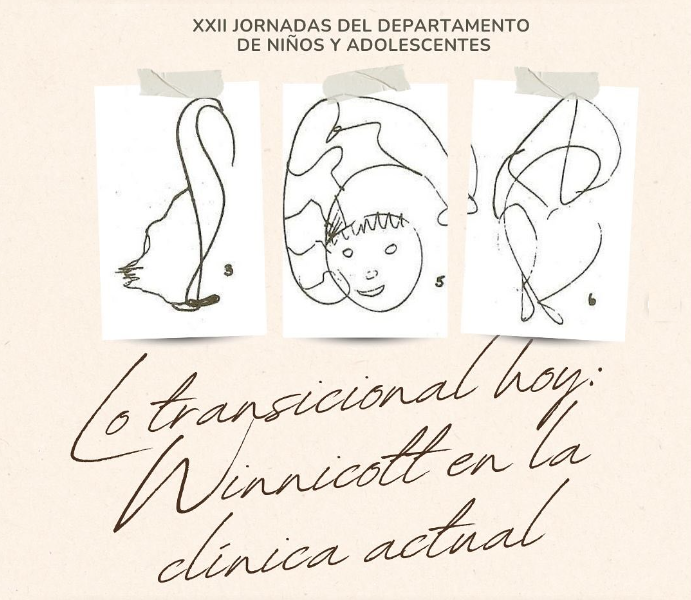Giovanna Ambrosio (Italia)
APF Congreso de Vilamura, Portugal 2005
The theme of Anna’s paper – Transformations and Resistances – proposes a reflection on the concept of negative therapeutic relationship. Far from being a ‘rigid’ concept, this can mean many things but particularly quality, energy, dynamics, significance, that are intrinsic to the vicissitudes of transference and counter-transference and, naturally, take on different forms according to the different psychopathological structures.
However, it seems to me that over the past thirty years the debate of the various schools of psychoanalytical thought has amply freed this concept from the inevitable initial ‘rigidity’. This is true especially regarding the refining of the psychoanalytical instrument that is now able to individuate and measure up to the increasingly frequent pathologies that are ‘at the limit’. In this regard, we may recall many fundamental contributions, from those of Bion on the psychotic personality, to those of Rosenfeld, Gaddini, Bleger and Green, and the post-Kleinian conceptualizations of the ‘pathological organization’ or Steiner’s ‘refuges of the mind’.
I wish to mention only a few of the thoughts that I have had while reading Anna’s work:
1 – While reflecting about H and her oscillations, already last year I found myself thinking more in the mobile terms of anxiety of disintegration and anxiety of integration (Gaddini, 1980) than in the more rigid terms of Negative Therapeutic Reaction. (For those who were not present, I am referring to the former as that differentiated form of anxiety of the loss of self expressed as the fear of going into pieces and dispersing the fragments of the self; it is the basis of various psychophysical syndromes, especially those concerning the skin experienced as a precarious boundary of the self. Integration anxiety, on the other hand, tends to maintain the state of fragmentation and hinder any ‘risk’ of integration whatsoever and, for that reason, can cause tenacious situations of blockage in the analytic process and obstinately hinder any change connected with the process of evolution).
In these terms I considered it useful to think of that exhausting swinging that Anna refers to in her Epilogue. I am reminded of certain patients who present exactly these tiring oscillations, at times making it extremely difficult to sustain and control the transference/counter-transference interplay; one finds oneself facing the disclosure of a pre-structural archaic nucleus that can become reactivated and coexist with the structure “that is created progressively and can also reach the most refined degrees of evolution ” (Argentieri, 2000).
We know from Freud (1937) and Gaddini (1983) how at the very early stages aggressiveness is directed toward the exterior; when a very early area is activated and the patient seems to kick out against the surrounding world and not against the object-analyst. I think it is very important to distinguish this from more evolved phases in which there already is an object-analyst against which to direct the aggressive charges.
This discernment also seems useful to me concerning the deciphering and handling of the transference/counter-transference dynamics.
Like Louise de Urtubey, I too think that in the negative therapeutic reaction there is a connection between negative transference and negative counter-transference.
I would add that the arrest is destined to remain such if the analysts acts ‘as though’ they are not traversed by their own transference affects, but especially if they are not able to give a meaning to their counter-transference affects or to decipher them in order to reach the unconscious communication that the patients – allowing them to experience that type of affect – are giving to them.
2 – I find that I have to repeat myself on account of a kind of ‘incidental’ that Anna re-proposes when she writes on p.7: “Of course, the somatic events impose the use of parameters which are holding the therapy in a specific setting, very far from the one of classic analysis”. Briefly, my point of view is very different and – referring to Herbert Rosenfeld, José Bleger and many others – I think that maintaining the analytical setting is the most effective guarantee – even more so with patients suffering from very early disorders – and that the couch-womb a very special container. More precisely, I think that the setting has a lot to do with the quality of the transference/counter-transference relationship, and that this can therefore also imply possible variations in the difficult controlling of a situation of impasse.
3 – Lastly, another small point of debate.
Like everyone else, I still find myself confronting, at the different degrees of pathological configurations, what Freud very aptly called the patient’s ‘bed-rock’ (even though, as we all know, he used this term mainly when referring to penis envy and to the ‘virile protest’, while today we give it a wider meaning). Well, I think that sometimes we can fall into confusion between negative therapeutic reaction and reaching the ‘bed-rock’ – that point which in clinical work assumes such material importance at the moment when we feel we have reached the limit of the psychic resources of the patient, the rocky part against which we can do nothing but bounce back.
This confronts us with the limitations of our instrument and with the valuable and essential – although at times tiresome – re-dimensioning of our narcissistic-omnipotent quotas. It sometimes happens that in the transference interplay we may feel restrained in the illusion of being able to push things further, of being prey – together with the patient – to a dangerous interweaving of reciprocal expectations that, at worst, can lead to collusion of the couple on the terrain of denial.
Giovanna Ambrosio
Italian Psychoanalytical Association (A.I.Psi.)



